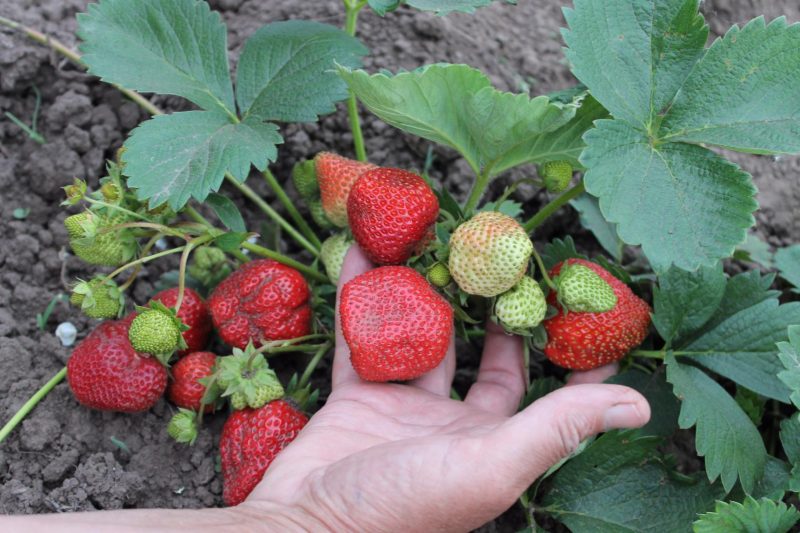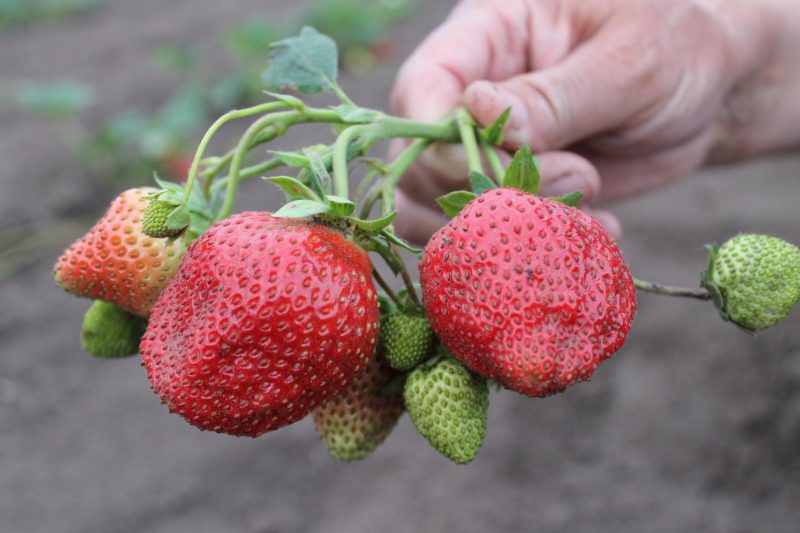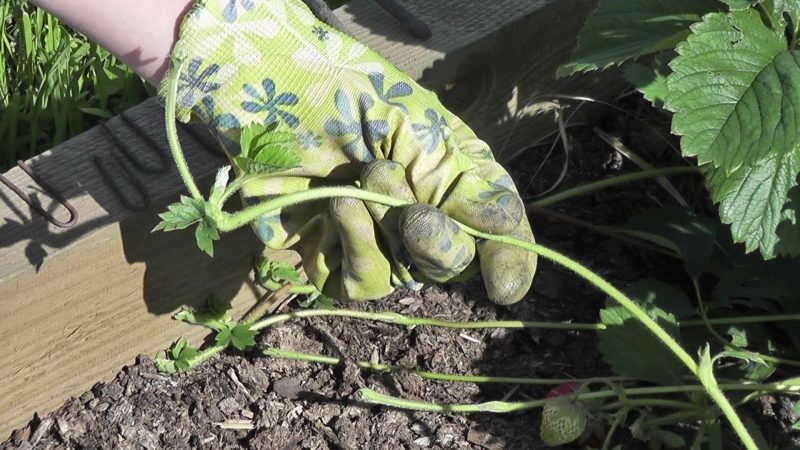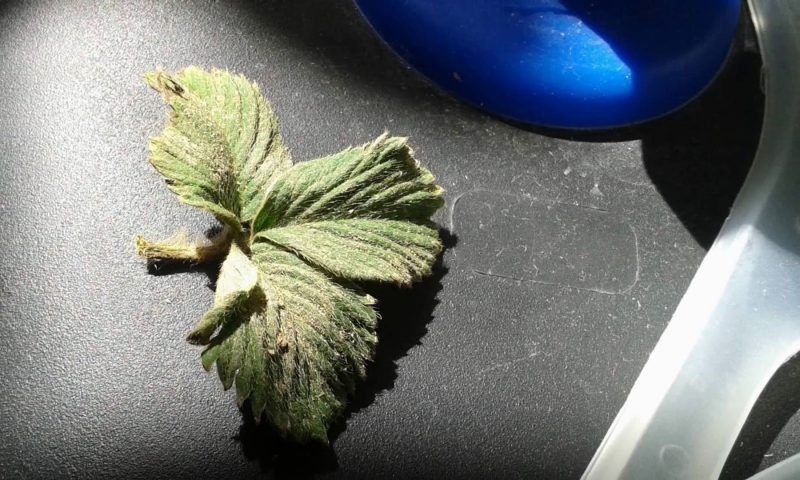Strawberry "Elizabeth", aka "Queen Elizabeth", got its name by chance. The variety was bred on the shores of foggy Albion more than two decades ago. And after a short period of time he became a favorite among gardeners in various parts of the world.
Material Content:
Grade description
The remontant early ripening variety is represented by rather high bushes, erect peduncles of which are located on the same level with green leafy plates. “Queen Elizabeth” forms a large number of mustaches, due to which by the end of the growing season a few beds can turn out to be a whole garden. During fruiting periods, of which there are three — at the end of spring, in the middle of summer, at the beginning of autumn — glossy large fruits are formed with dense and fragrant flesh of a delicate color. The early ripening of red berries of the strawberry-typical form is due to the fact that the buds are planted in the fall.
In 2001, by chance, the ordinary farmer bred the genetic successor of the above variety - “Queen Elizabeth 2”. She is very similar to her “parent”, with only a few differences.
According to the description of the variety "Elizabeth 2", these discrepancies are the main advantages of the latter:
- earlier term and longer duration of fruiting;
- large-fruited;
- more powerful bushes;
- better disease resistance.
On a note! The maximum possible weight of one fruit with strict adherence to the agrotechnical regulations of cultivation reaches 80 g.
Cultivation and care
Strawberries are an integral berry culture of any garden, because there is nothing better than enjoying aromatic fruits in late spring - early summer, when the body suffers from a lack of vitamins after a long winter. In order to make a rich harvest possible, it is necessary to correctly approach the issue of growing a crop, including planting and care.
Proper planting is an important component in the formation of a large and high-quality crop.
Landing in open ground consists of several stages:
- Seat selection. For Queen Elizabeth, a sunny area with fertile soil is selected. If the soil composition is poor, then under digging, during which the roots of weeds are removed, superphosphate and humus are necessarily added at the rate of 1 bucket per 1 m2.
- Definition of terms. Landing is carried out in late spring, when the threat of freezing frost passes, or in early autumn. The second term is more optimal, but unacceptable for regions with severe weather conditions.
- Landing technology. In the prepared area, holes are dug with a distance of 20 cm between the plants and 60 cm between the rows. After that, the seedlings placed in the recesses with spread roots are dug up by the soil so that the heart is flush with the surface of the soil. At the end, near-stem circles are compacted and watered to eliminate the voids formed around the roots.
If a two-way landing is carried out, then the distance between the rows is reduced to 20 cm.
Fertilizing, watering and weed control
In order for the Queen Elizabeth strawberry to realize its potential, it is necessary to carry out comprehensive care of the culture.
Among the important events stand out:
- fertilizer application;
- organization of an irrigation system;
- timely loosening;
- weeding.
Strawberries should be watered regularly so that the ground is constantly moist, but without stagnation of water in the roots. The most optimal method of irrigation will be drip irrigation, which is especially urgent during the period of fruit loading.
After humidification, the beds loosen, weed and mulch. A layer of mulch will protect the soil from cracking, which will reduce the number of loosening and watering, as well as prevent the intensive growth of weeds.
It is interesting:yeast plant nutrition - recipe
Since the variety bears fruit throughout the growing season, we should consider in more detail what kind of dressing Queen Elizabeth loves.
- After the snow has melted and the shelter has been removed, it is recommended to feed urea or a solution of bird droppings prepared on the basis of water at a rate of 1:10.
- During the entire fruiting phase, potassium is applied under the bushes in half the dose indicated on the package so that the crop does not begin to “fatten” to the detriment of the formation of large fruits.
Do not forget about the bush transplant, which is required every 2 years, so that the crop remains stably high and of high quality.
An important point is the preparation of strawberries for the winter. Despite the fact that the variety is relatively cold-resistant, in the second half of autumn, plantings should be covered with fallen leaves. In the case of high probability of severe frosts in the absence of natural snow cover, a more reliable covering material is used.
Mustache Strawberry Propagation
Removable strawberries with a large number of mustaches reproduce precisely with their help. This technique relates to vegetative methods that allow you to maintain varietal qualities of the culture.
In this case, some manipulations should be performed:
- During the ejection of peduncles from the most powerful bush, all buds are cut.
- Next, grooves are dug nearby, into which a mustache is pinned (no more than 4 from the bush).
- All other processes with rosettes are removed.
- For layering care, as well as for the maternal instance.
- After the formation of rosettes of new leaflets that confirm rooting, the cuttings are separated and planted on the prepared site.
With this method of reproduction at a time, you can get a large amount of healthy planting material.
Characteristic diseases and pests: how to deal with them?
On cultivar, in conditions of waterlogging associated with rainy weather or excessive watering, powdery mildew may occur. In the fight against it, treatments with copper-containing fungicides will help.
If crop rotation is disturbed and strawberries are planted after solanaceous or pumpkin crops, signs of late blight can be found on the shoots, which should also be treated with fungicidal solutions. The next year, it is advisable to transplant the plants to another site.
The insect variety "Elizabeth" is not attractive, therefore, as a rule, there is no need for chemical treatments. Sometimes plantings can be attacked by a weevil, with which tobacco ash, applied to leaf plates, does an excellent job.
Read also:euphorbia mile
Harvesting and storage
Thanks to the Queen Elizabeth variety, the strawberry crop can be harvested throughout the growing season, and in warm regions until October. Dense, juicy berries with fragrant flesh are perfectly stored frozen, without losing their shape, and are also often used to prepare a variety of blanks. Fresh berries can be stored only in the refrigerator, but for a maximum of 7 days without loss of commercial quality.
Due to the dense structure, the fruits tolerate transportation well, and the variety can be cultivated for further sale in retail outlets.
If the gardener is ready to provide comprehensive plant care, then the Queen Elizabeth crop variety will be an excellent choice.


















